Generality
Cooked ham is a preserved meat, more precisely a cooked salami NOT stuffed and partially covered with rind.
Cooked ham is made from the "real" boned leg of the pig (S. scrofa domesticus), therefore, in its production no other parts of the animal are used. NB. Often cooked ham is replaced by a very similar product, but significantly less valuable: the cooked pork shoulder.

The production of cooked ham involves some essential phases: slaughtering of the pig, processing of the hind limb (cutting, degreasing, boning - but not always -, massaging, etc.), steaming and packaging.
Cooked ham is not "all the same"; leaving aside the variability of local recipes (which would require a paragraph each), cooked ham officially differs into three distinct categories. To say it is the "Ministry of Productive Activities", which with the Decree of 21 September 2005 (Official Gazette No. 231 of 04 October 2005) regulates the production and sale of cooked ham in: high quality cooked ham, selected cooked ham And baked ham (as you can see, the cooked shoulder does NOT fall within the specification of the salami in question).
Background
Cooked ham is a food with ancient origins, dating back even to ancient Rome, where there is traces of the recipes for processing pork. Indeed, despite being a cured meat, cooked ham is nothing more than a "big roast"; its discovery is therefore attributable to the Latins who, in the northern regions of the empire, tried to facilitate the cooking of the roast pork leg by boiling it in water and herbs. It is not excluded that the legionaries acquired the first notions on the preparation of cooked ham from the roosters, the Lombards or other barbarian populations gradually absorbed into the empire; not surprisingly, the regions that produce the best qualities of cooked ham (given the greater tradition) are: Friuli Venezia Giulia, Lombardy, Piedmont, Liguria and Emilia-Romagna.
Production
The production of cooked ham takes place through the succession of different phases that are totally "inalienable" and irreplaceable. From the beginning, the pork leg is deboned and aged for a few days at a temperature of 6-8 ° C; this is followed by salting, which in cooked ham is NOT applied from the outside onto the surface of the meat (as occurs for most whole cured meats), but by injections of infra-muscle brine. This procedure is called churning and is considered as a real massage; the churning of cooked ham can last up to 70 hours. This is followed by cooking (70 ° C), which takes place with steam but with the use of a special mold; then the cooling-storage, in the cold room, at a temperature that touches 0 ° C. At this point, the cooked ham it undergoes a real husking that regularizes its shape and carefully cleans the surface (including the rind); the last step is the packaging and pasteurization of the cooked ham, which considerably extends its shelf life (as long as the requirements are respected : refrigeration at + 4 ° C and integrity of the vacuum).
The production of cooked ham also varies according to local tradition, therefore, there are as many ways of packaging the salami as there are places that have integrated it into the indigenous culinary tradition.
Additives
Cooked ham, being a preserved meat, cannot ignore the addition of preservative molecules; among these, some are purely natural (such as salt from brine), while others are registered in the list of food additives. The most used preservatives in cooked ham are nitrites and nitrates (E240-E259), but there is no lack of: glutamates (E620-629), polyphosphates (E450-459), milk powder and / or caseinates, and ascorbates (E300-E309 ).
Nutritional characteristics
Cooked ham has a notable "hygienic advantage" over raw cured meats; in fact, (being cooked) its consumption is also allowed during pregnancy (since there is no risk of parasitic infestation or bacterial food poisoning). However, we remind you that cooked ham provides a fair amount of nitrates and nitrites, molecules which - if introduced excessively - are potentially responsible for the release of toxic nitrosamines (involved in the carcinogenic processes of the stomach).
Cooked ham is a preserved meat that contains considerable quantities of sodium chloride (table salt) and potentially allergenic food additives; for these two characteristics, cooked ham should be consumed with particular moderation by those suffering from hypertension (since excess sodium worsens the pathological condition) and even avoided by those sensitive to certain molecules, such as lactose intolerant or allergic with milk proteins.
Cooked ham provides an energetic quantity that varies according to the amount of fat deprived or kept during skinning; the whole one is sufficiently caloric, while the one deprived of visible fat is decidedly more similar to a cut of lean meat. Both provide good weights of high biological value proteins, basically saturated lipids, cholesterol and traces of simple carbohydrates (consisting of lactose from powdered milk).
From the saline point of view, as mentioned above, cooked ham is rich in added salt, therefore sodium; there is also no lack of potassium, iron and phosphorus. As for vitamins, cooked ham provides good quantities of those of group B (thiamin, riboflavin and niacin).
Nutritional composition of cooked ham - Reference values of the INRAN Food Composition Tables


Other Foods - Cured Meats and Sausages Bresaola Cotechino Culatello Guanciale Sausages Lard Mortadella Bacon Raw Ham Cooked Ham Ham Spanish Ham Salami Sausage Blood Pudding Speck Wurstel Zampone OTHER ARTICLES SALAMI Categories Alcoholic Food Meat Cereals and derivatives Sweeteners Sweets Offal Dried fruit Legs and Derivatives Milk and Derivatives Fish and fishery products Cured meats Spices Vegetables Health recipes Appetizers Bread, Pizza and Brioche First courses Second courses Vegetables and Salads Sweets and Desserts Ice creams and sorbets Syrups, liqueurs and grappa Basic Preparations ---- In the kitchen with leftovers Carnival recipes Christmas recipes Light diet recipes Women's, mom's and dad's day recipes Functional recipes International recipes Easter recipes Celiac recipes Diabetic recipes Holiday recipes Valentine's Day recipes Vegetarian recipes Protein recipes Regional recipes Vegan recipes

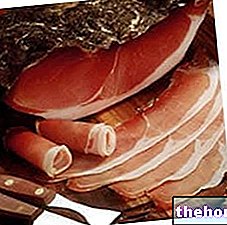
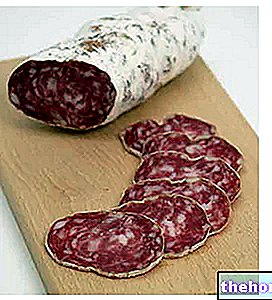
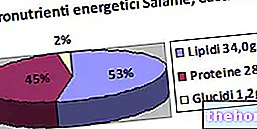

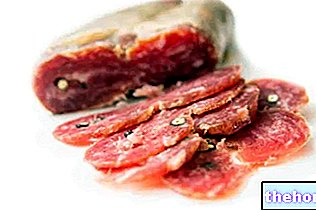
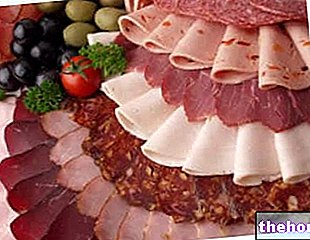









.jpg)











